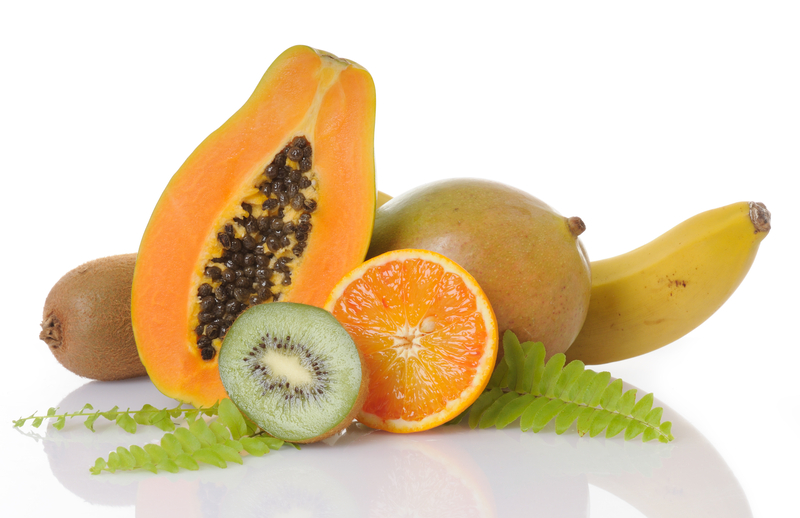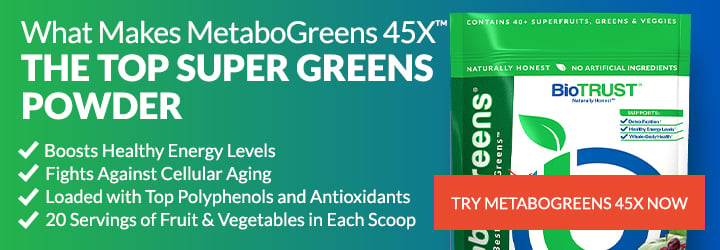20 Foods You Don’t Need to Buy Organic

Whether you’re on a fixed income or are just watching your budget, one thing you likely noticed is that eating healthy can get pretty expensive—especially if you’re trying to eat organic. While many of us prefer to go organic all the time, it’s not always necessary. And sometimes, it really doesn’t matter either way. In fact, there are plenty of foods you don’t need to buy organic.
Of course, just increasing the amount of vegetables and fruits in your diet—organic or not—is better than going without. You’ll be getting loads of nutrition, including fiber and vitamins and minerals. And, it’s certainly better than getting most of your food off a dollar menu.
Why Buy Organic?
There are several reasons people reach for organic produce. One of the biggest is that you limit your exposure to pesticides by choosing organic. Pesticides sprayed on vegetables and fruits are absorbed into the foods, leaving trace residues that can accumulate in the body.
Another reason is to avoid eating genetically modified organisms or GMOs. There’s competing information on the impacts of GMOs as they offer pros as well as cons. For example, GMOs can increase crop yields and the nutritional value of some foods. The growing conditions may also help conserve soil moisture and protect against soil erosion. 1,2
Yet, some GMOs may also increase allergic reactions or decrease resistance to antibiotics. In addition, the use of GMO crops can increase exposure to herbicides, as the plants are typically more heavily sprayed with these types of chemicals. 1,2 Organic foods are also not processed with food additives or exposed to radiation. While there are benefits, some people simply feel more comfortable avoiding them.
One other good reason to buy organic is to support sustainable farming. Organic farmers work hard to avoid using pesticides and herbicides that can have downward damaging effects on the environment by potentially contaminating groundwater, harming wildlife, as well as impacting the health of farmers, who experience greater exposure to farming chemicals.
Foods You Don’t Need to Buy Organic
Organic produce, unfortunately, is often more expensive than conventionally-grown produce. So, to save your hard-earned money, it’s worth knowing which foods are likely to contain fewer pesticide residues and spend your cash when it counts the most.
The Environmental Working Group (EWG) released a list of the Dirty Dozen fruits and vegetables with the highest pesticide residues. On the flip side, they also released the Clean Fifteen, which is a list of the least contaminated foods.
Many of the fruits and vegetables on this list have thick skins that protect them from chemical contamination. That said, experts still recommend washing off any produce before cutting into it to limit the transfer of dirt or chemicals from the outside of the food to the inside.
BREAKING: Forget Taking Collagen, Try This 21-Second Trick for Healthier Skin & Hair Instead
Others are simply more resilient or attract fewer pests, including insects and harmful organisms, so they don’t need as much added protection.
In short, buying these 15+ foods conventionally can save you cash while giving you peace of mind that you’re not consuming as many unnecessary chemicals.
- Avocados have a thick, protective skin, which helps protect the creamy flesh from toxins.
- Sweet corn (not to be confused with field corn, which is highly likely to be heavily sprayed and genetically engineered) has a naturally protective husk, which helps protect the sweet kernels from potential pesticides.
- Pineapples are one of the cleanest fruits you can find. With their thick, tough, spikey peel, they’re well protected from pests as well as chemical contaminants.
- Onions, including sweet onions, have been found to have low levels of pesticide residue. Plus, because you peel the outside layers, you decrease exposure to chemicals.
- Papayas also have a nice, thick protective layer, which keeps the tender flesh relatively free from pesticide exposure.
- Frozen sweet peas begin with a thick outer shell that’s removed before being shelled and frozen. Alternatively, you can always shell your own fresh peas.
- Eggplant (aka aubergine) is another choice with a low chance of delivering pesticide residue. According to the EWG, up to 75% of eggplant samples provide no residue whatsoever.
- Asparagus may not have a protective skin, but they are typically left alone as they grow, limiting their exposure to pesticides.
- Broccoli is a highly versatile, extremely healthy, affordable food. Plus, you can save even more by purchasing conventionally-grown broccoli as it typically has minimal pesticide exposure.
- Cabbage—while there’s no protective outer shell, cabbage tends to be a resilient plant, which again means it’s not likely to be heavily sprayed.
- Kiwis are another fruit you can comfortably purchase from the conventional section as nearly 65% have been found to contain no pesticide residue. Again, they’re well-protected due to their thick, fuzzy peel.
- Cauliflower is another vegetable that typically has little to no discernable residue, so it’s safe to purchase conventionally.
- Mushrooms also typically have very little chemical residue.
- Honeydew Melon, it should come as no surprise, has a strong defense system with its thick skin.
- Cantaloupe again has a tough skin that’s difficult for pesticides to penetrate.
While not on the Clean Fifteen this past year, grapefruits, bananas, watermelons, and mangos are also well protected by their thick skin, making them good options. Many have been listed on the Clean Fifteen list in years past. Sweet potatoes are also often sprayed with fewer chemicals and typically are okay to buy without an organic label.
According to research, organic produce has a 30% lower risk for pesticide contamination compared to conventional produce. However, that doesn’t mean that organic foods are necessarily free of pesticides. Plus, conventionally-raised vegetables and fruits fall within allowable safety limits to protect consumers. So again, if organic products aren’t in your budget or are difficult to find in your area, you’re still much better off eating more conventional vegetables and fruits than bypassing them altogether.
Simple Ways to Save on Organic
Some foods still appear to be more nutrient-dense as well as less chemically contaminated when purchased organically. Berries are one significant example. Peaches, apples, cherries, celery, lettuce, spinach, and potatoes are also more likely to have heavier chemical residues when conventionally grown.
So, to save good money and still enjoy organic produces, the best thing to do is to buy produce locally and in-season. It’s still a good idea to comparison shop, but local farmers’ markets, family farms, and produce stands can be a great way to purchase fresh, organic foods for less. Better yet, they help support local, more sustainable farms and communities.
You may also be able to save by buying in bulk—perhaps by teaming up with other family members, neighbors, or friends—and even clipping coupons.
Whatever produce you purchase—organic or conventionally grown—remember to look for fresh, clean vegetables and fruits, and wash them well in clean water to help stave off food-borne illness.






